While some people may enjoy the act of cracking the whip it’s important to remember that these tools can be dangerous if not used properly.
So, if you’re going to crack that whip, be sure to do so with caution – and maybe a little bit of humor. Because let’s face it, there’s nothing funny about a whip that’s gone rogue.
Cracking the Whip
Whips are used in a BDSM roleplaying scene by a dominant to inflict pleasurable pain. Also used as a tool for a sensory experience when gently dragged across erogenous zones. And used to point at things to tell a submissive what to do.
We are sensory beings and enjoy these senses being activated especially during sex.
One of the terms that is used endearingly between BDSM enthusiasts when they would like to go for a whipping session is “Lets go and do a little bit of slap and tickle!”
Using Whipping Techniques Safely when Cracking the Whip
So you want to go out and flog someone?
Now, you just need to know how to do it! There are different techniques to use whips properly. If a whip is used incorrectly, it may not be enjoyable and it can be possibly dangerous.

Who Gets to be In Control?
The first thing you will need to do is work out who is the dominant and who is the submissive in a BDSM relationship.
To tell who is who, let’s clarify what these terms mean.
Dominant
A dominant or a dom is the partner in a BDSM scene. They take active or controlling role over the submissive and decides what happens in the roleplaying scene.
The dom follows the submissive’s rules set out before the scene and practices risk aware consensual kink.
Submissive
A submissive or a sub is the partner in a BDSM scene who willingly gives up some or all control to a dominant partner. Submissive follows what the dominant decides and practices risk aware consensual kink.
When Are People Dominants And Submissives?
This type of partnership is often referred to in the BDSM community as a dominant/submissive or D/s.
There are varying degrees of D/s relationships. Some people are only dominants or submissives during certain events like at BDSM parties, clubs and dungeons. Or during certain times like when having sex or engaging in a roleplaying scene.
Some people also switch between roles.
What Gender Is More Likely To Be A Dominant Or A Submissive?
In the 80’s, research on heterosexual couples showed that during sex and roleplaying scenes about 75% of men are the dominants and 25% of women are the dominants. And 75% of women are the submissives and 25% of men are the submissives.
Other Types Of Roles In A BDSM Scene
Some live as a full time submissive who relinquish control to their dominant in all aspects of their life. They are commonly known as a slave or a cuckold.
Slave
A slave is a person who submits control of a large percentage of his or her day-to-day life to a dominant. They may submit within a formal set of rules and rituals set out by the dominant.
Cuckold
A cuckold is a husband, boyfriend or lover who has a partner who cheats on him. They may encourage his partner to be an adultress. A cuckold may sexually enjoy being humiliated, degraded and controlled like a slave by his partner.
Master
The master is the male dominant partner of a slave.
Mistress
This is the female dominant partner of a slave.
Top
In a gay relationship, the dominant is often referred to as the top.
Bottom
A submissive is often referred to as the bottom in a gay relationship.
Why Would Anybody Want To Be Submissive?
It is often said that people who have a lot of responsibility in their career and/or day to day lives often reverse their roles in the bedroom to become more submissive.
These people may crave someone to make all the decisions for them which can be stress relieving.
How Does A Man Dominate His High Achieving Wife?
With the ever increasing politically correct stance of equality for women, how does this play in relationships? To have a wife that is career orientated, while the stay at home husband looks after the kids can sometimes create difficulties.
Roles may switch in the bedroom. But it is up to each individual couple as to whose role is what.
Agreement Between A Dominant And Submissive
A dominant and submissive relationship is like a contract. It must be agreed before hand how much or how little ‘slapping and tickling’ is to take place.
There must be one or more safe words for when the submissive wants something to stop.
AND like all contracts they are not to be broken which helps the roleplaying scene remain safe and enjoyable. If the contract is broken the trust between the parties will no longer be there.
Whips Are Different To Crops
Just to be clear whips are different to crops, clappers, canes and other punishment devices. But they serve to attain the same purpose, a sensory explosion on an area of the body for taunting, teasing and punishment.
A whip can tickle, create fear, cause an explosion of sound, sting, slap, thud and more when used in the correct hands.
Different Types Of Whips
There are different types of whips with different purposes. Here is a list of the 11 different types of whips. Please note, some of these whips are not used for people in BDSM, kink and fetish scenes.
Sana Whip
A sana whip or flogger is often made with soft leather, PVC or silicone. It is a wider multi tailed whip that is designed to tickle and even when used strongly it will not inflict pain.
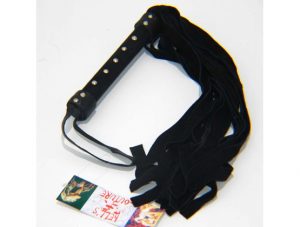
Stockmans Whip
Often called a bull whip. This is a long leather whip often over 1.6 metres long that has a ‘cracker’ on the end.
These whips, when used correctly, will flip back and make a massive crack. They can reach up to 3 times the speed of sound. This whip is to be used with care and is a theatrical accessory in BDSM.
It is not to be used as it will break skin and cause serious damage.
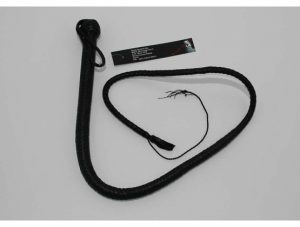
Cat O Nine Tails
Originally used as a means of punishment in the military and in prisons for centuries.
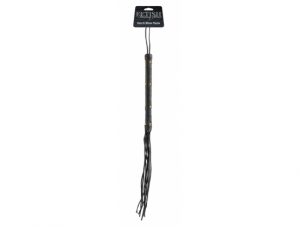
Florida Cow Whip
This whip is similar to the stockmans whip except it is thicker and heavier and has a hollow centre.
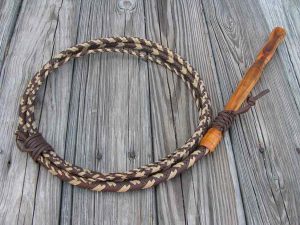
Snake Whip
A snake whip can be made out of leather, rope and other materials. It is generally made with a patchwork design.
At the tip there is a single or multiple narrow strings that will create a crack effect when used. Since it is braided it is a very flexible whip.
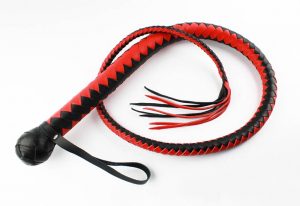
Quirt Whip
A quirt whip has a fork design that usually has two falls at the end. It is sometimes called a riding quirt or horse quirt.
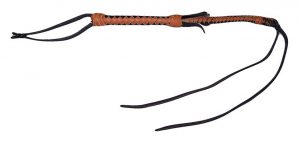
Hunting Whip
This is similar to a riding whip except on one end of the whip it has a lash that measures several feet in length. On the other end it has a hook, which is used to help the rider open and close gates while out.

Sjambock
The sjambock was a very popular weapon used in martial arts for centuries and is very long.
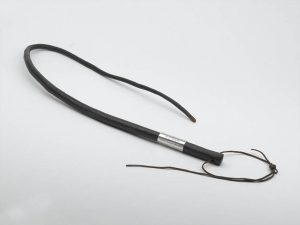
Jiujiebian
A jiujiebian was originally used in martial arts and is made of segmented metal chains equal in size on the whole length of the whip.
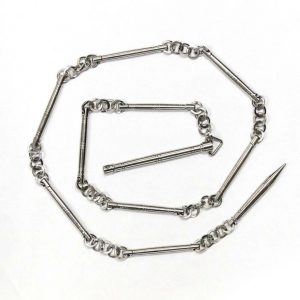
Qilinbian
This was originally used in martial arts and is made of segmented metal chains. The lash is made of steel rods decreasing in size that are all linked together by progressively smaller steel rings.
Bludgoen Whip
A bludgeon whip has a heavy stick on one end with a rope or weapon on the end.

Cracking the Whip on the 5 Best Whipping Techniques
So now that you know what styles of whips there are. You have agreed on the sensations that you wish to impart or receive.
Here are the 5 best whipping techniques that are used. Now remember, these can take some practice beforehand to make sure you get it right. Careful discipline will ensure that you get the best results.
Overhand
Stand in an upright position and bring the whip up over your shoulder and ensure your elbow is parallel to the body. If it is facing inwards or outwards it is possible that you will end up whipping yourself. Bring the whip straight down to the target.
Carnival
Similar to the overhand but just prior to hitting the target snap or flick the whip back towards yourself.
Reverse Snap
This one takes a bit of practice but circle the whip overhead gaining speed and then snap the whip towards the target.
Sidehand
With the palm of your hand outwards and your arm to the side, flick your hand towards your body and the whip will travel sideways to your target.
Underhand
Face your hand in a downward position snap the whip up towards your target.
One Of The Biggest BDSM Whipping Communities
A more popular whipping groups is Whippersnapper in Atlanta which has a whopping 4456 members that have open discussions and forums.
If you are a newbie into the world of punishment I strongly recommend you join this group or a similar group that will be able to guide your through your journey.

Enter Andrew Pullen BDSM world of Fet Lifestyle, BDSM, and expert Shibari insights. Explore his descriptive and educational articles at Adultsmart.


